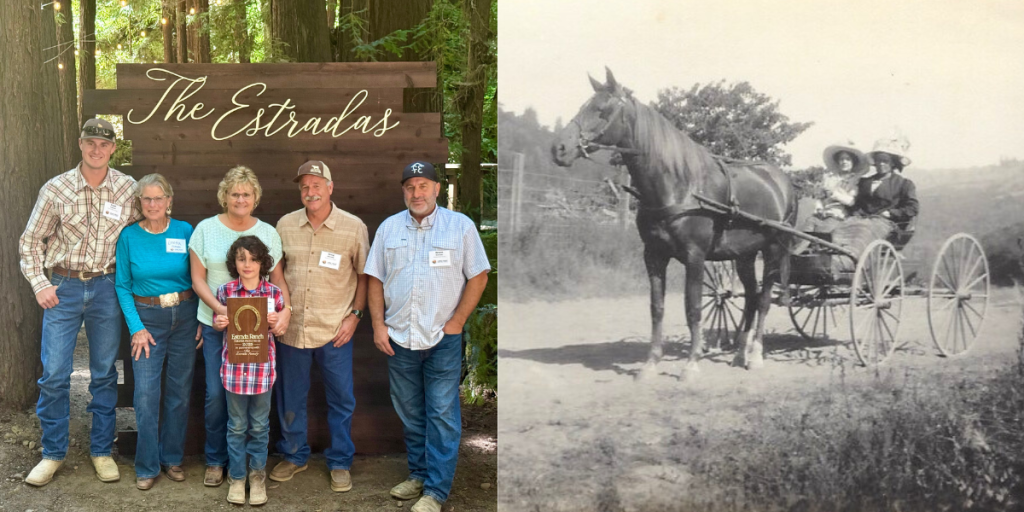Five generations of Estradas have grown up — and watched their children grow up — on a sprawling 1,205-acre working ranch in the heart of the Pajaro Hills in Santa Cruz County, maintaining thoughtful stewardship of the land.
The property has been in the Estrada family since 1863, used for grazing cattle and harvesting redwood trees while maintaining the environmental integrity of the landscape.
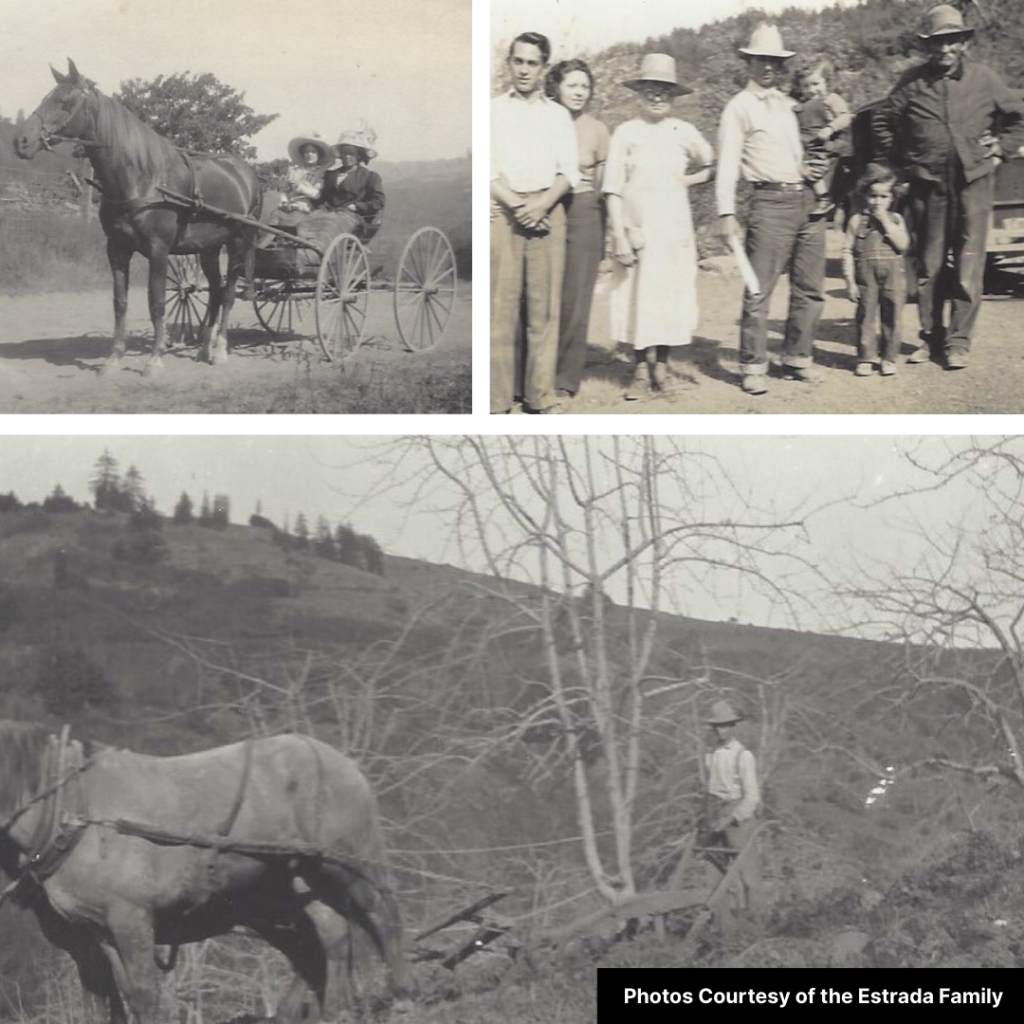
“My brother and I grew up here as kids running around, throwing rocks at the creek, and climbing on the trees, and sliding down the hill on the seat of our pants,” said Grant Estrada.
“If we could turn the clock back to when my grandparents were here in the ’60s, they would probably recognize the place just as it was when they left it to my dad,” said Greg Estrada, Grant’s brother. “I think that as good stewards of the land, we’ve pretty much left it the way it was left to us.”
A Big Question
One question has loomed over the years: How many more generations of the family would get the opportunity to be stewards at Estrada Ranch?
“As youth growing up, we never thought that we could retain the ranch,” said Greg Estrada. “A good portion of it was owned by our uncle and we knew we could not afford to buy him out.”
“It could very easily have been cut in half and have been kind of an unmitigated disaster,” said Grant Estrada.
A New Way Forward
Now, that looming question has been answered, thanks to a collaborative land protection project.
With funding and support from the California Strategic Growth Council’s (SGC) Sustainable Agricultural Land Conservation Program (SALC), which is implemented in partnership with California Department of Conservation; the Peninsula Open Space Trust (POST); the Land Trust of Santa Cruz County (Land Trust); CAL FIRE; and private donations, the acreage has been protected in perpetuity through a conservation easement.
“I want to say mostly thank you for getting the forever out of the impossible,” said Grant Estrada. “We have two more generations on the ground right now and they are more than willing and able and capable of continuing with the mission that we’ve been blessed to have received from the generations before us.”
Conservation easements help prevent the conversion of farmlands to development, which avoids increased vehicle miles traveled and greenhouse gas emissions, and promotes continual carbon capture. They support the local agricultural economy and maintain access to nutritious food, while also protecting native plants and animals and their habitats and supporting sustainable land management practices that help in fire-risk reduction, among other benefits. As a former CAL FIRE chief, Greg Estrada is well-aware of just how important this is.
The new easement ensures that ownership of the whole property will stay in the family while the flora, fauna, habitats and ecology of the ranch and working forest remain free from threats of development and disturbance. It also greatly improves the continuity of protected lands in an eight-mile span along a high ridgeline, creating a 5,800-acre contiguous protected area.
“The Estrada family and this ranch have been a cornerstone of the community for generations,” said Barry Baker, Director of Land Protection at the Land Trust. “This project achieves everything we hoped for by ensuring the protection of the working landscape that benefits wildlife in perpetuity, while also honoring the Estrada family’s stewardship of the land.”
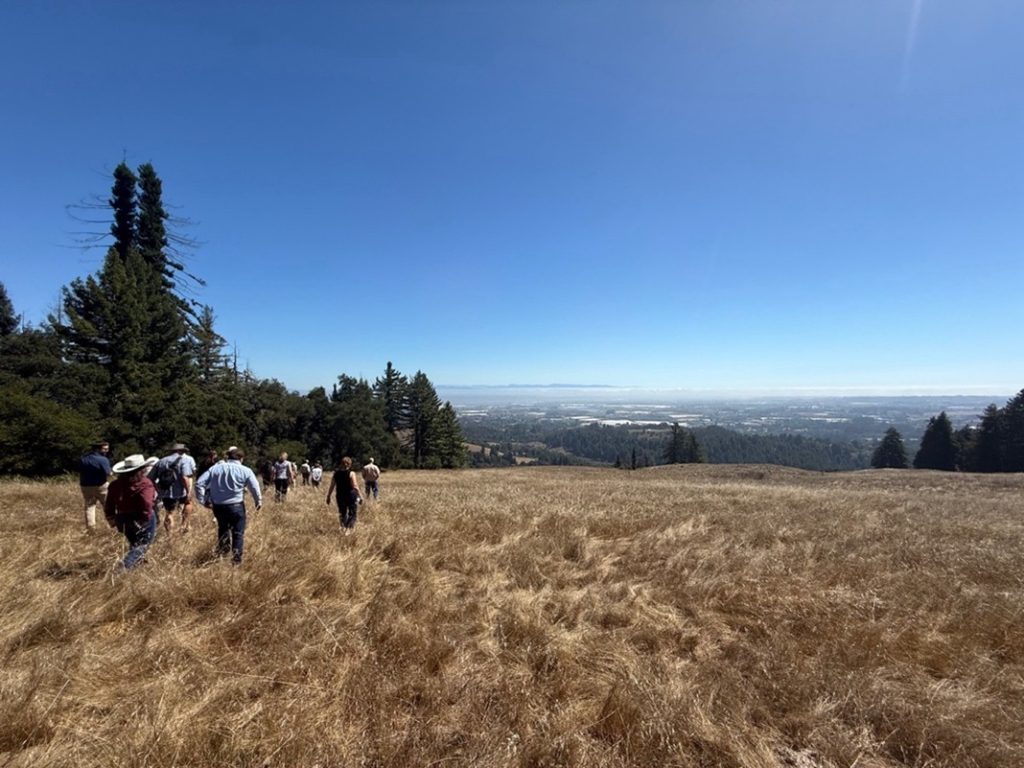
“The connectivity between a protected Estrada Ranch and adjacent parkland creates exactly the type of landscape-scale protections that are called for in the California 30×30 initiative, which aims to accelerate the pace and scale of building climate resiliency and protecting biodiversity,” said POST President Gordon Clark.
A Special Property
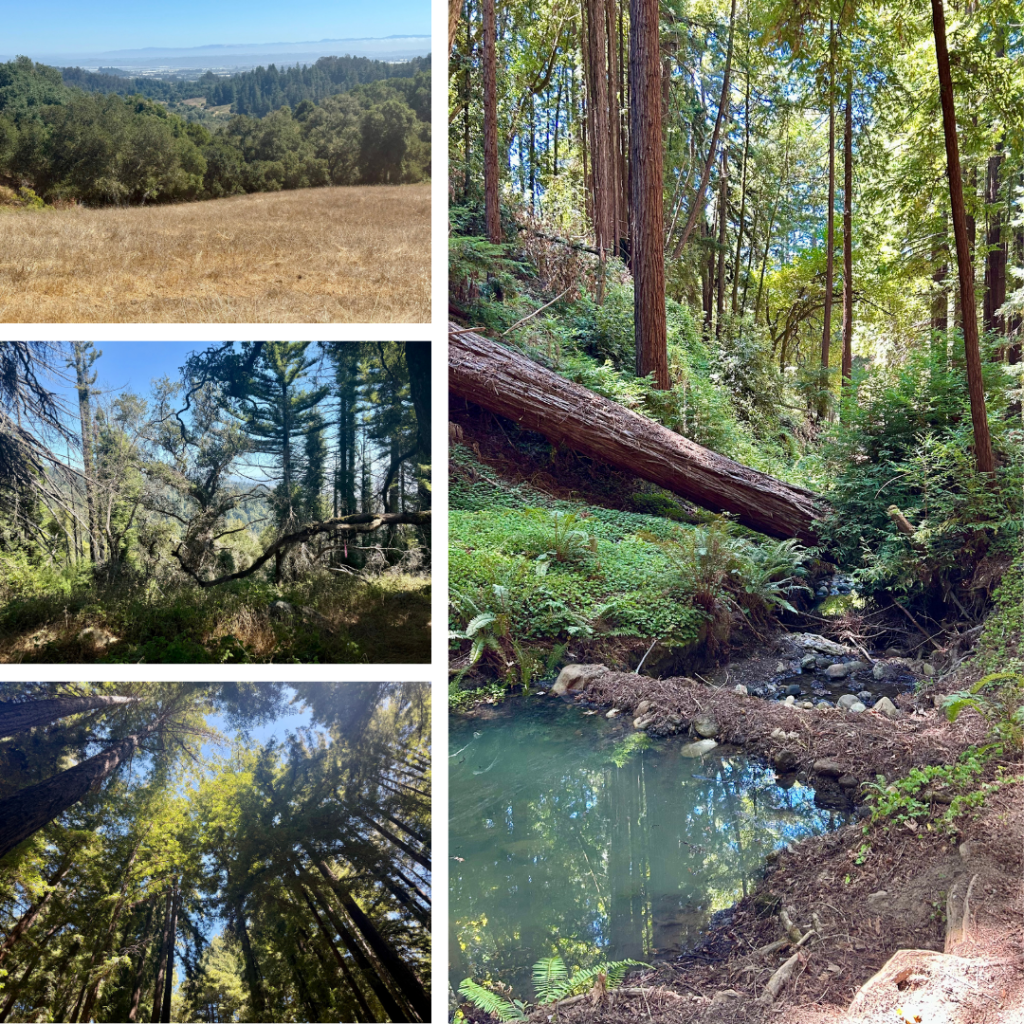
The acreage hosts an array of critical habitats — ranging from redwood forest to chaparral, along with headwaters of regionally important creeks and intact wildlife corridors. These habitats support many species including black-tailed deer, mountain lions, coastal steelhead, and the California red-legged frog, a federally threatened and state species of special concern.
“This land protection strategy is unique in that it allows us to achieve dual conservation outcomes,” said Sarah Newkirk, the Land Trust’s executive director, “preserving habitat and a critical piece of the wildlife corridor between the Santa Cruz Mountains and the Gabilan Range while enabling the Estrada family to continue their generational working ranch.”
The Future
The property is an example of how sustainably managed working lands and wildlife habitat can exist — and even thrive — side by side.
“We’ve always followed the rules and regulations and restrictions of being good stewards of the land,” said Greg Estrada. “We feel like we owe it to the environment and the species and the next generation.”
“It is our kind of a family legacy in that our children and now our grandchildren have the opportunity to continue on with what’s been going on here for a very long time,” said Grant Estrada.
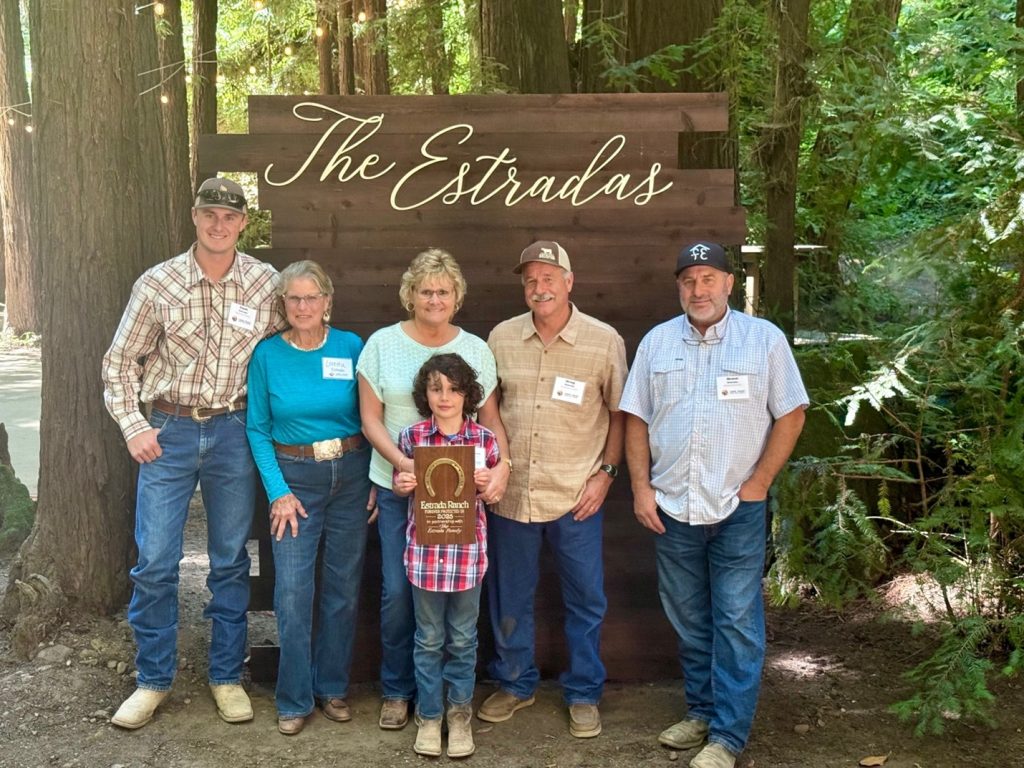
About the Region
The Pajaro Valley and surrounding hills are part of the ancestral lands of numerous Indigenous peoples who stewarded the land for millennia before the devastating, violent impacts of Spanish colonization in the 18th century. Today, their descendants, including members of the Muwekma Ohlone Tribe and the Amah Mutsun Tribal Band, are working to restore Indigenous knowledge and practices to these ancestral lands – Popeloutchom – including through the Amah Mutsun Land Trust.
The valley had an influx of European, Chinese, Filipino, Japanese and Mexican settlers, with many of these communities tied to its agricultural heritage. Since the 19th century, the region has been a driver of agriculture in Santa Cruz County, and today Pajaro Valley is among the top five agriculturally productive regions in the state. Apples were a primary crop for a long time, with the Watsonville Newtown Pippin being famous for its cider and remaining the basis of Martinelli’s apple cider. Today, the primary crops grown include strawberries, apples, fresh flowers, cauliflower, broccoli and artichokes.
About the California Strategic Growth Council
The SGC is a Cabinet-level Council housed within the Governor’s Office of Land Use and Climate Innovation that works to coordinate and work collaboratively with public agencies, communities, and philanthropy to achieve sustainability, fair access, economic prosperity, and quality of life for all Californians. The Council is composed of the leaders of seven state agencies and three public members who work together to build healthy, thriving, resilient communities for all Californians.
About the Sustainable Agricultural Lands Conservation Program
SALC is a component of SGC’s Affordable Housing and Sustainable Communities Program (AHSC). It complements investments made in urban areas with the purchase of agricultural conservation easements, development of agricultural land strategy plans, and other mechanisms that result in GHG reductions and a more resilient agricultural sector. The program invests in agricultural land conservation with revenue from California Climate Investments (CCI) made available for projects that reduce greenhouse gas emissions while providing additional benefits to California communities. CCI is derived from quarterly cap-and-invest (formerly cap-and-trade) auction proceeds, which are administered by the California Air Resources Board. The California Department of Conservation works in cooperation with the California Natural Resources Agency as SGC’s implementation partner for the program.
About the Land Trust of Santa Cruz County
The mission of the Land Trust of Santa Cruz County is to protect, care for, and connect all people to the vibrant natural and working lands that are essential for our community and nature to thrive together for generations to come.
About Peninsula Open Space Trust
POST protects open space on the Peninsula and in the South Bay for the benefit of all. As a private nonprofit land trust, POST has been responsible for saving more than 93,000 acres since its founding in 1977. POST works with private landowners and public agencies to create a network of protected lands so that present and future generations may benefit from the careful balance of rural and urban landscapes that makes our region extraordinary.
